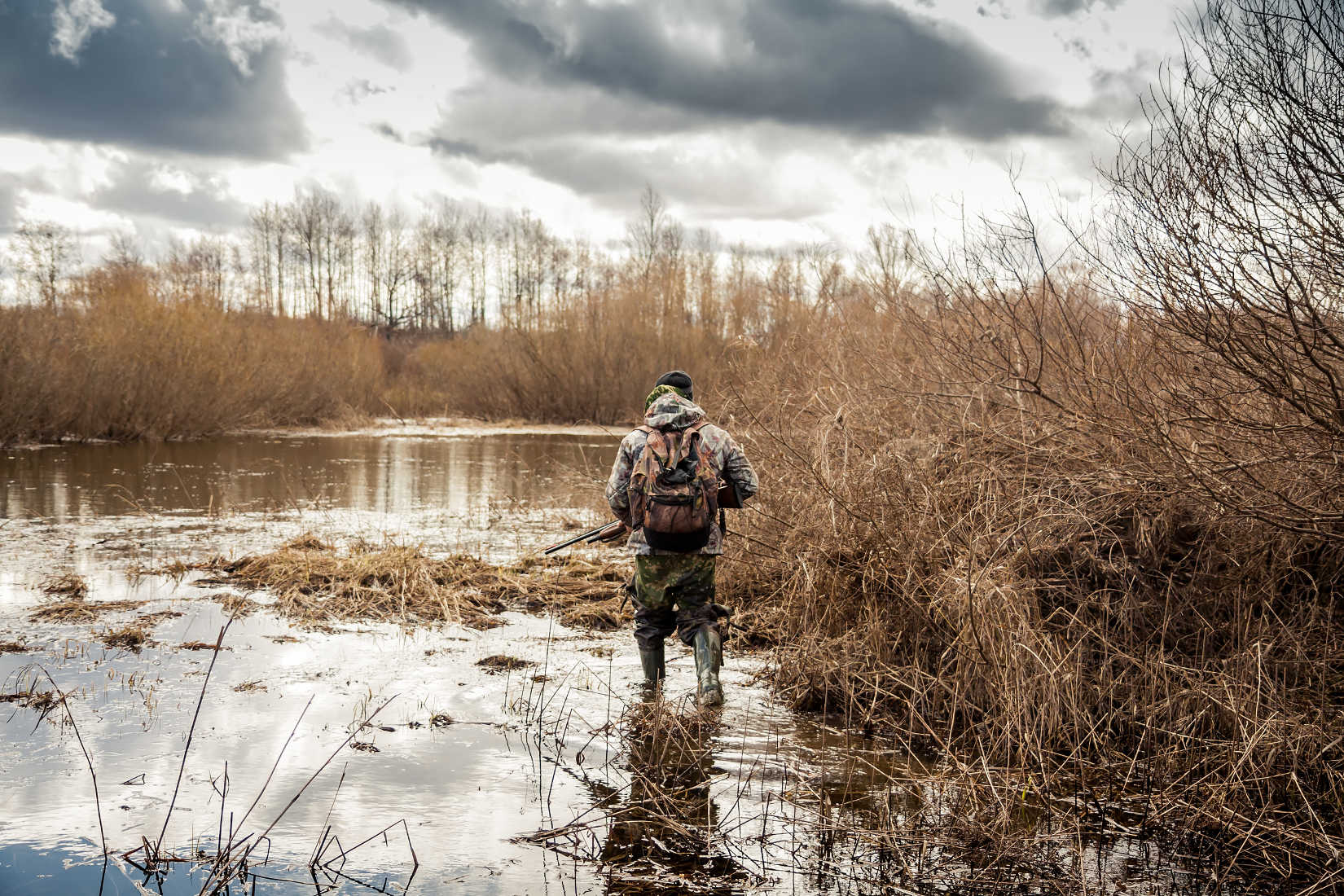By: Randy Tucker
Laramie, Wyoming sits atop a high plateau just east of the Snowy Range Mountains. The city is 7,220 feet above sea level, and visiting teams from lower latitudes quickly notice the oxygen debt when competing against the University of Wyoming Cowboys.
Waterfowl hunters often speak of the merits of jump shooting the Missouri and Mississippi drainages or of hunting the many lakes, streams, and rivers along the west coast on the Pacific Flyway, but rarely is high-altitude waterfowl hunting given its merit.
The 1970s were a very different time in America. Across the University of Wyoming campus were notices to check your rifles, shotguns, and handguns at the campus police depository, but few of us did it.
The guys in Crane Hall were armed to the teeth, the dorm director knew it, the dean of students was an avid duck hunter himself who built miniature brass cannons; he also knew it, and nobody ever thought twice about a 12 gauge or .22 in your dorm room closet.
In the fall of 1977, my future roommate Frank arrived from the wilds of Bismarck, North Dakota.
That’s where his parents’ address was at the time, but he was really a backwoods Minnesota boy from Rochester.
If it flew, swam, or ran, Frank would hunt it.
Gino arrived from New York State, along with our mutual friend Andy from Connecticut that same semester. We quickly became a sometimes quarreling, gregarious band of sportsmen.
Gino had his familiar Beretta semi-auto 12 gauge. I had just my single-shot 12-gauge Iver Johnson. Andy had a Mossberg 12-gauge pump, and Frank had a 16-gauge pump made for Coast to Coast stores (I never knew the manufacturer).
Frank and I fished after classes throughout the year along the Laramie River drainage west of campus, and in the process discovered some great waterfowl hunting areas.
Twin Buttes Reservoir and Lake Hattie are both plains lakes along a glacial moraine carved out millennia ago during the last ice age. It is a strange sight to spot what looks like a New England-style stone wall in the midst of the windswept plains of Wyoming’s high plateaus, but it is just a reminder of how far south the glaciers once extended in North America.
There is a creek – more of a drainage than an actual stream – that connects the two bodies of water together, and it was here Frank and I discovered a perfect habitat for college kids without dogs and just a handful of decoys to hunt ducks.
Redheads, buffleheads, mallards, and blue and green winged teal flourished in the area.
During homecoming week each year, the university has a “dead day” for sorority, fraternity, and alumni activities during the homecoming festivities. We never took part, but dead day was right in middle of split season waterfowl hunting in Wyoming. It was a dead day: a dead day for ducks! we joked as we headed out early that morning.
Our friend Scott from Upper Morland, Pennsylvania joined us, and our party of five squeezed into my 1978 For Fairmont.
We set Frank’s 15 mallard decoys along the east edge of the drainage and waited for the sun to rise.
We could hear the swoosh, swoosh of the teal darting along at up to 60 miles per hour above us in the darkness, but it was a flock of redheads that came in first on the decoys.
We almost took our limit just 15 minutes into the day, but continued to hunt throughout the morning and early afternoon.
There was a huge flock of redheads in the middle of Lake Hattie, but they wouldn’t flush. I walked to the far side of the lake and took a much too long shot at a stray redhead flying in. I missed, but the rest of them gradually started to stir, beating the water and taking flight to circle the lake.
The other four guys limited out as the birds passed, and I took a final redhead that landed about 75 yards out in the lake.
It was a warm fall day, maybe 65 degrees, and I decided to swim for the floating drake.
I stripped down and swam out to the duck who was floating in about 12 feet of water. I grabbed the bird, threw it towards shore and then swam to it to throw it again.
In about eight feet of water, I hit a cold up swell of water, ice cold, and my legs quit working right. I began to flail with water two feet above my head since I couldn’t swim anymore.
“Great!” I thought, “you drowned chasing a duck.”
I started to drop to the bottom and kick up to the surface while moving my arms forwards. Gradually I moved towards shore and finally my feet found the bottom. I kept throwing the duck towards shore as I stumbled out of the water.
I lay there a few minutes to catch my breath and let the sun dry me off.
I got dressed and walked back to the guys.
“Where have you been,” they all asked.
Yep, they got an expletive or two.
We cleaned the birds and drove back to Laramie for another wild night in a college town.
It was our first waterfowl hunt, but many more waited for us before we all graduated a couple of years later.
Randy Tucker is a retired history teacher and freelance writer from western Wyoming. He has a lifetime of experience in farming, ranching, hunting and fishing in the shadow of the Wind River Mountains. Contact him at [email protected].

